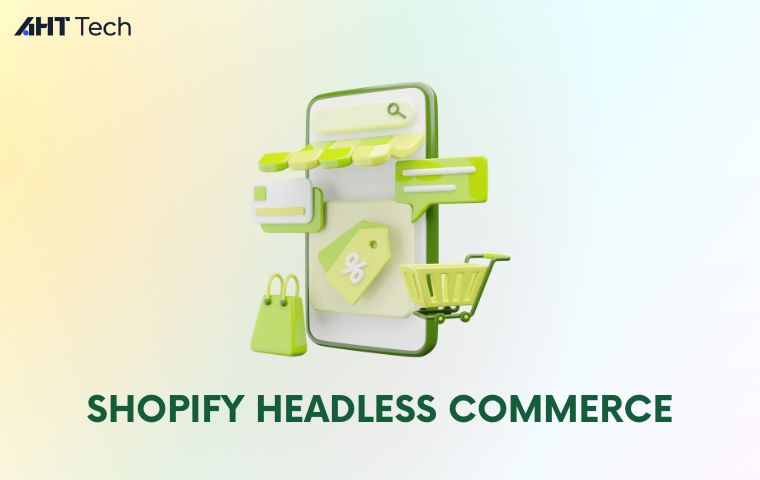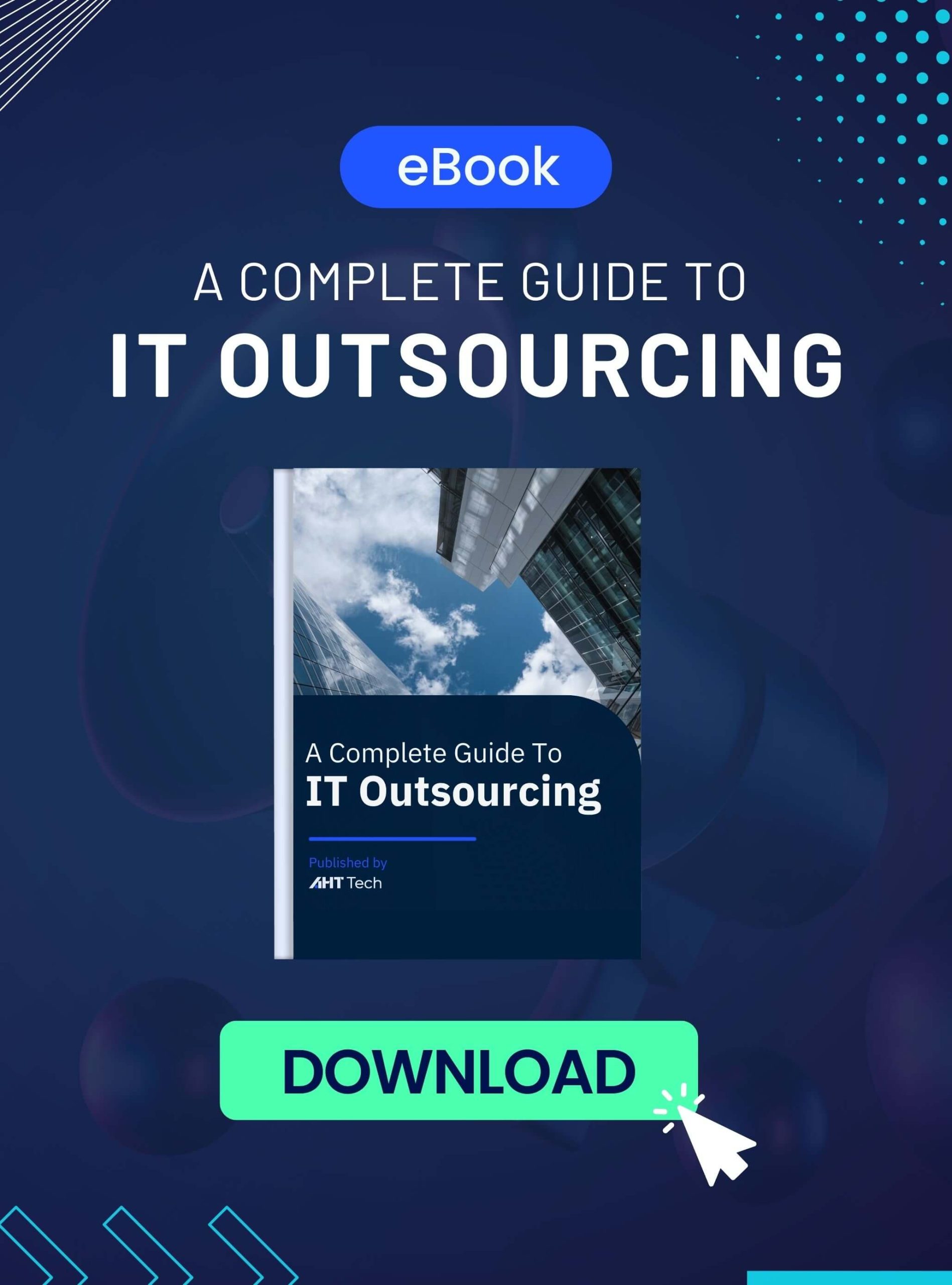TABLE OF CONTENT
What is Headless Commerce?
How Shopify Headless Commerce works
3 prime Shopify Headless Commerce benefits
Key Business Considerations for going Shopify Headless Commerce
3 Prominent Ways to Deploy Headless Commerce
Examples of Shopify Headless Commerce
Conclusion
What is Headless Commerce?
Headless commerce offers a key advantage in today’s multichannel retail environment. In principle, headless commerce is a model that decouples the front-end presentation from the back-end ecommerce functionality, allowing for flexibility in content delivery.
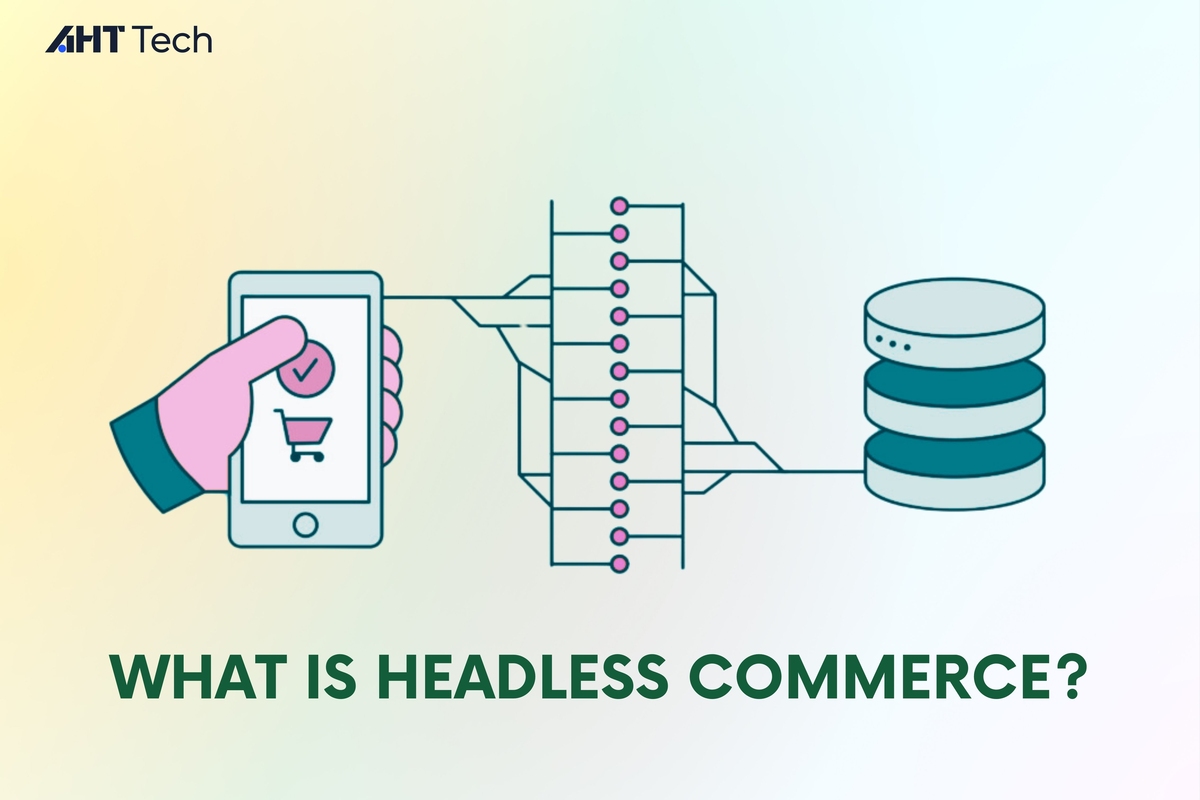
You can think of it with an easier approach, which is similar to the splitting of the “head” and the “body”. The head (front-end) is everything you have in the user interface, including visual elements, the interactive features that customers directly experience.
Meanwhile, the body (back-end) can act as the engine, being responsible for handling crucial tasks such as product management, order processing or data security. This separation allows businesses to gain benefits of specialized platforms for each layer, resulting in a better flexibility to distinct requirements.
How Shopify Headless Commerce works
Basically, Shopify headless commerce comprises three key components: the front-end, the back-end and the storefront API to connect the two.

The front-end encompasses all customer-facing channels such as websites, smartphone applications, social commerce platforms.
The back-end acts as the foundation of headless architecture which is responsible for supplying essential data to the front-end. Its system includes:
- An ecommerce platform to manage products, customers, and transactions.
- A headless CMS that you use to define the content structure and manage content across various digital channels.
- Any other third-party software to assist the back-end to integrate with to foster the scalability and adaptability.
The Storefront API allows any Shopify instance to function as part of a Shopify headless commerce. It works like a bridge to connect headless Shopify back-end and front-end. The Shopify developers or Shopify development companies simply make API calls from the front-end and receive the necessary data from the back-end. This flexibility ensures consistency across all touchpoints of many devices.
3 prime Shopify Headless Commerce benefits
Shopify headless commerce is undeniably powerful for businesses of all shapes and sizes. Here is a closer look at why online retailers are increasingly adopting headless commerce strategy.
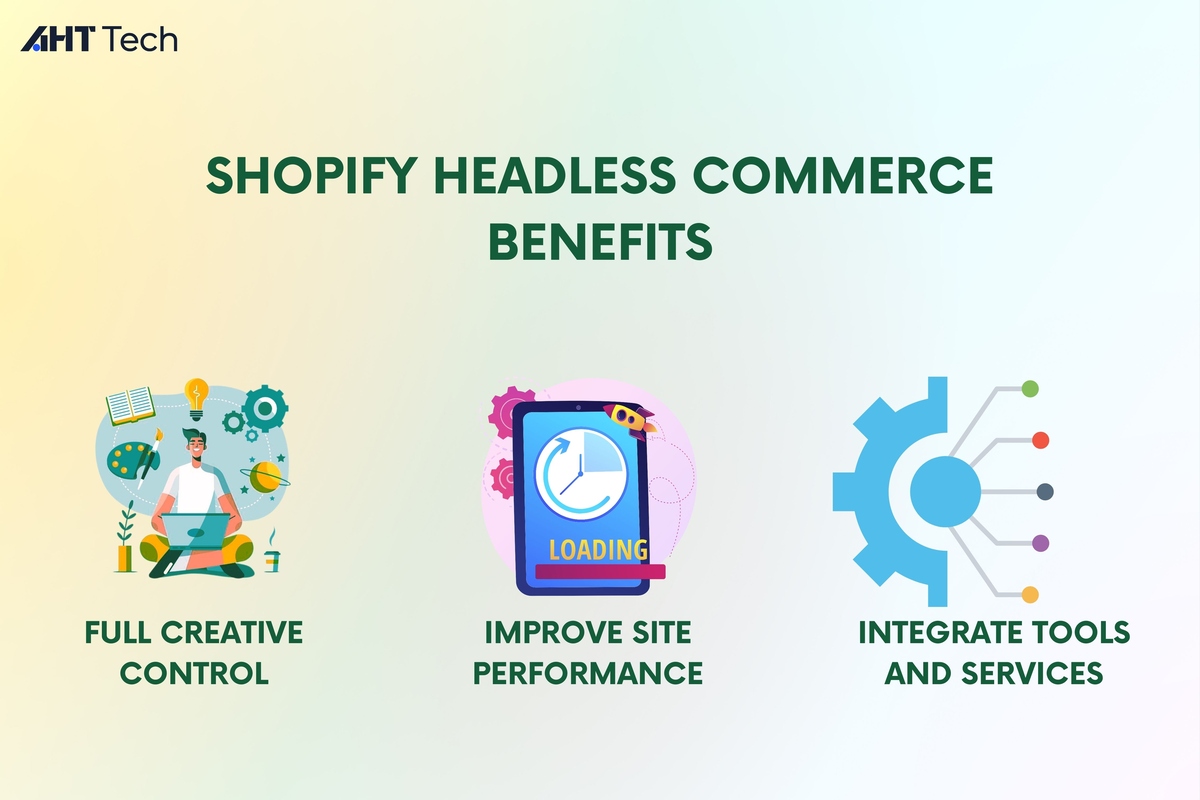
Full creative control
Shopify headless commerce eliminates limitations, allowing for full creative and functionalities. By decoupling the front-end and back-end, headless architecture offers businesses free integrations with the most effective tools. This offers store owners to cater every aspect of customer experience and increase online engagement rate.
Thanks to the separation of the “head” and the “body”, you are also able to conduct A/B testing. You can experiment with various front-end elements without disrupting the stability of the back-end infrastructure. By getting in-depth insights of what touchpoints are, you can identify areas needing improvement to deliver the best services.
Improve site speed and performance
When your customers land on your site, it just takes a few seconds to capture their attention. Therefore, it is essential to ensure a rapid page load experience for your ecommerce website.
A research by Website Builder Expert underscores the importance of website load speed, which emphasizes that:
- 64% of smartphone users anticipate the web pages loading no more than 4 seconds
- 40% users abandon websites if it takes longer than 3 seconds to load
- 82% users say that slow loading times negatively affect their buying decisions.
But your ecommerce site will not have to be stuck into these problems while utilizing Shopify headless commerce. By adopting a headless architecture, the front-end can fetch data from the back-end, balancing the responsibility, leading to faster-loading pages across many devices and ensuring a smooth browsing experience for users.
Integrate with preferred tools and services
Currently, many coding systems do not support certain integrations due to incompatibility between distinct programming languages, which can result in negative customer experience. Nevertheless, Shopify headless commerce plays nice with everyone.
Leveraging robust APIs, headless architecture facilitates the comprehensive integration of your existing systems to build a best-in-class shopping experience using your preferred programming language. This safeguards against technological obsolescence, allowing you to be adaptive with the ever-evolving pace of ecommerce.
What is more, Shopify headless commerce also offers flexibility for developers to leverage composable tech stacks. This means you can remove or replace any components which are no longer suitable for your demand. The noticeable thing is although you are able to add or switch functionalities, you do not disrupt the entire platform thanks to modular integrations.
Key Business Considerations for going Shopify Headless Commerce
While the advantages of Shopify headless commerce may seem appealing, it is paramount to consider other aspects to jump into the final conclusion that whether it suits your business or not. Here are some key considerations that should not be overlooked.
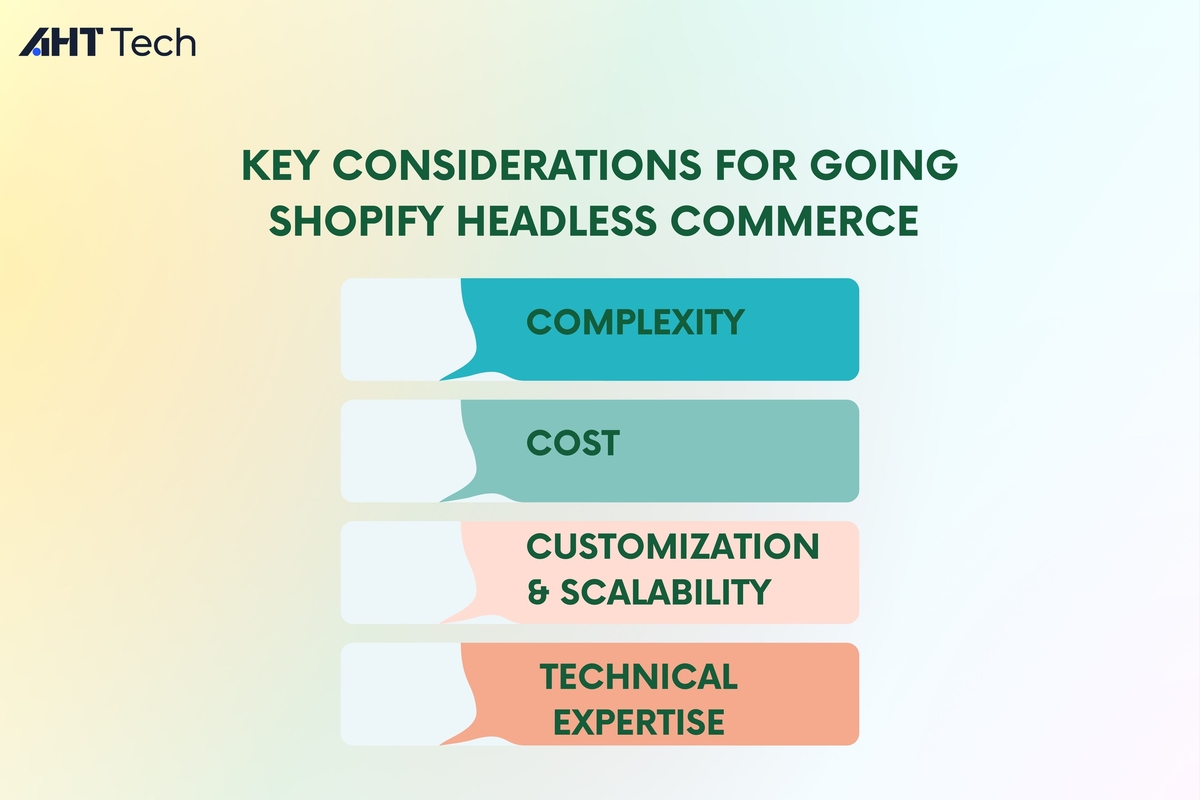
Complexity
Shopify headless commerce is a decouple structure which separates the front-end and the back-end. Hence, it requires businesses a certain level of complexity in terms of website development and maintenance. If you are small brands with limited technical resources, it can be quite challenging to manage a headless setup and updates.
Cost
Involving in technology, especially developing a headless architecture typically incurs higher upfront costs. The reason is somewhat relevant to what we have mentioned above. Shopify headless commerce needs specialized skills to build and integrate separate systems.
And before finalizing your decisions, it is important to take cost into consideration, ensuring the smooth operation of your stores without disruptions due to cost limitation.
Customization and Scalability
For online stores which prioritize the simplicity and ease of use to deliver a sense of user-friendliness, Shopify headless commerce is perhaps overwhelming. While it offers unmatched scalability and customization, it can be too much for store owners to have such a complex structure to run their storefront like headless commerce do.
They might be more beneficial from platforms that provide a more manageable solution.
Technical expertise
Shopify headless commerce implementations necessitate a high level of technical knowledge for ongoing development and maintenance.
If your businesses lack the in-house capability to handle specialized requests, it can lead to a significant operational cost. Therefore, this aspect shouldn’t be ignored prior to constructing headless commerce.
3 Prominent Ways to Deploy Headless Commerce
Utilizing Shopify headless commerce opens up vast opportunities for businesses to create unique and customize their brand identity. However, the very first step to take advantage of this structure is to implement headless commerce to your stores. These three ways mentioned below may be helpful for you.
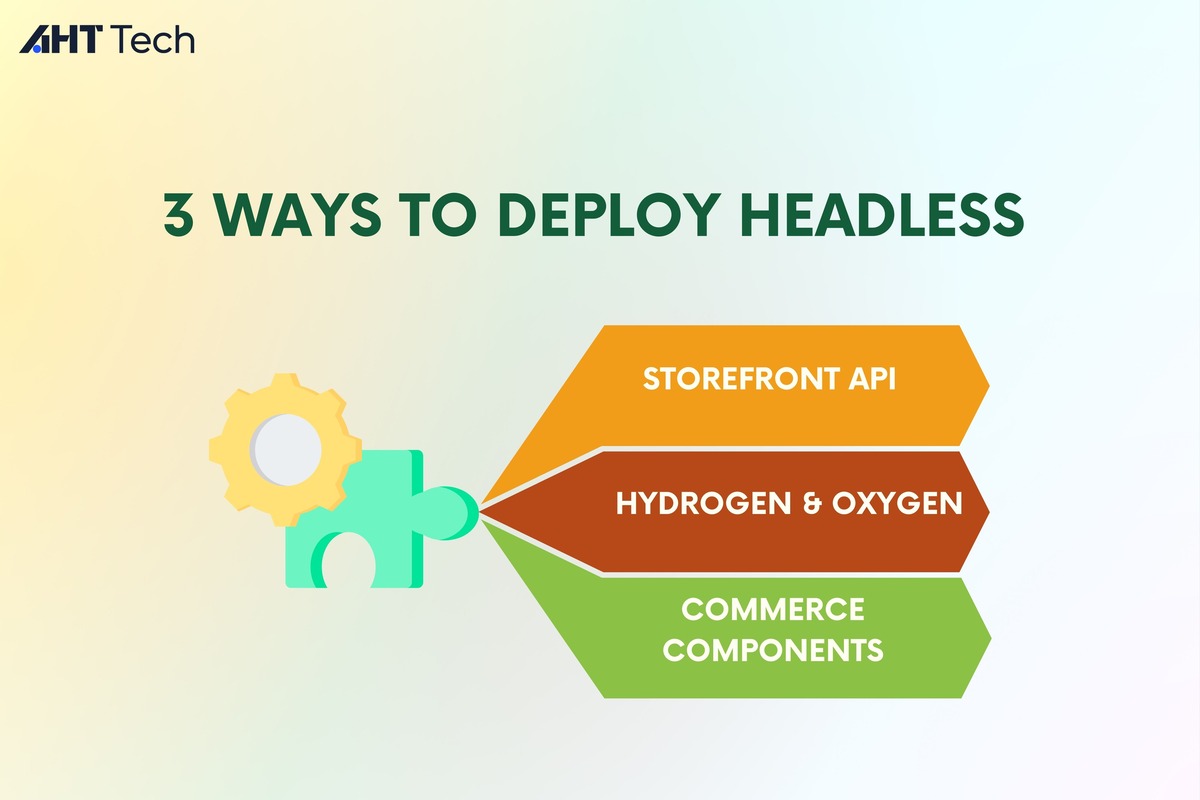
Method 1: Employ the Storefront API
The Shopify Storefront API uses GraphQL-based API – a query language designed for APIs. It empowers businesses to connect the frontend of their website to the backend of Shopify. This integration grants them effortless access to data and ecommerce functionalities. Consequently, Storefront API can be useful to craft personalized customer experience through diverse digital touchpoints.
Method 2: Utilize the Shopify Hydrogen and Oxygen solution
Launched in 2021, Shopify’s Hydrogen and Oxygen solution cater specific requirements of large enterprises who want to implement headless commerce on Shopify Plus.
On the one hand, Hydrogen is a robust framework, utilizing React to build user interfaces, empowering businesses to construct unique and visually appealing storefronts on Shopify. On the other hand, Oxygen provides a global hosting solution to accommodate custom content. By being well-equipped with over 100 server locations positioned worldwide, Oxygen helps you minimize technical complexity and streamline the deployment process without third-party hosting providers.
Method 3: Leverage the Commerce Components solution
Shopify Commerce Components – the latest innovation from Shopify is the third method to adopt Shopify headless commerce. This is a modular tech stack comprising over 30 components with core features across various business domains such as Shopping Cart, Shipping, Checkout. You are able to integrate these components based on your needs to customize solutions for your Shopify website.
The Shopify Component seems to be one of the most powerful ways to construct headless architecture because since its launch, many world-leading businesses, including Mattel, JB Hifi, Glossier, Coty, Steve Madden, Spanx, and Staples, have utilized this new tech stack from Shopify.
Examples of Shopify Headless Commerce
To enhance the trustworthiness of how Shopify headless commerce can truly breath a new relief to your businesses, the brands listed in this section are great examples to showcase how this website architecture can work wonders.
Kotn
Establishing the first online store with Shopify in 2014, Kont was founded with a clear vision to define conscious creation and consumption within the apparel industry. To expand its product range to cater evolving customer preferences, the brand began to embark on a strategy for the next decade of growth.

To be more specific, Kont made use of Shopify Storefront API to consolidate their two separated stores into a single with a new CMS, simultaneously custom product page and checkout page for better customer experience.
Consequently, Kont can minimize the need for custom applications, while also enhancing the capability of managing products, inventory and sales easier for staff and customers.
Rothy’s
Rothy’s has an impressive slogan “Believe in doing things differently”. And at their early adoption of headless architecture, it was truly a contrast approach to a monolithic one.

Rothy’s advanced Shopify headless commerce has facilitated their international expansion successfully. The headless architecture enables them to reuse core back-end data such as product catalog, content, etc while configuring different front-end for each region. This flexibility pays the way for regional customization, including pricing plan and languages.
Verishop
Verishop is a multifaceted online shop catering to a wide range of consumer needs. It could be anything that you can imagine, from fashion items to beauty products and health essentials.
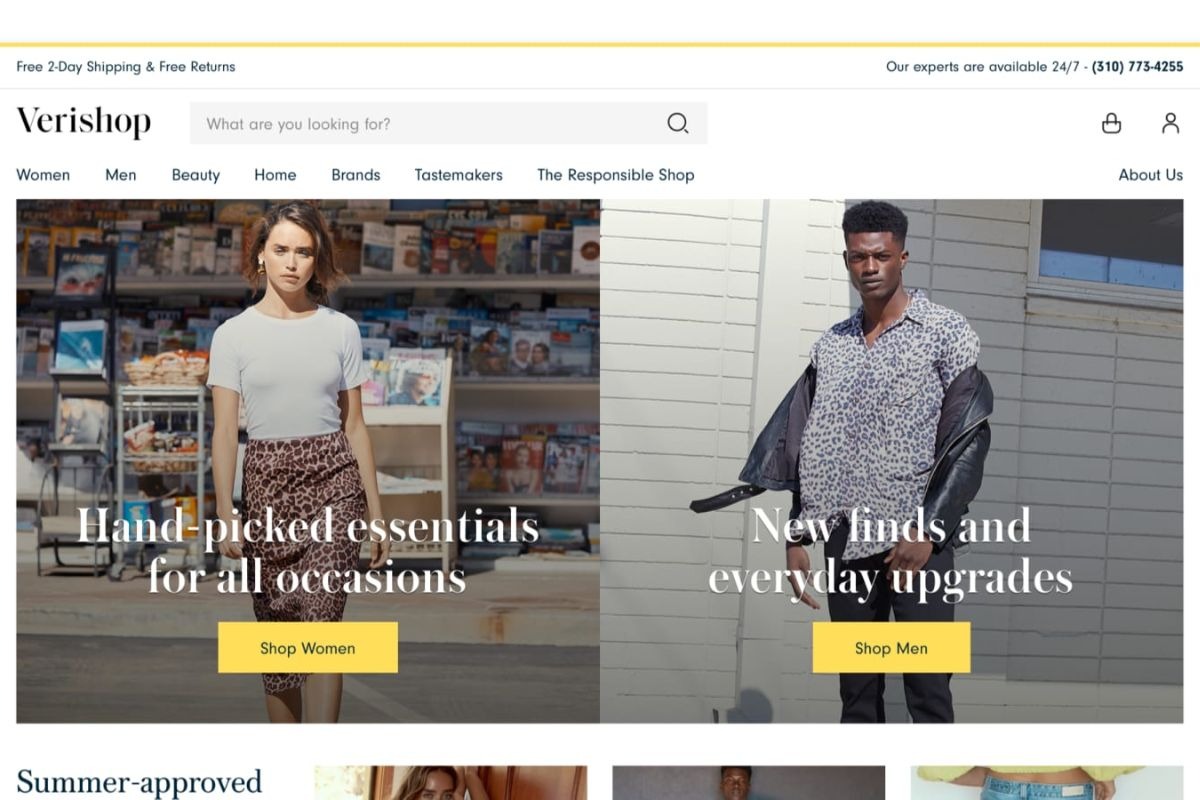
Being a multi-brand retailer, Verishop leverages the advantages of Shopify headless commerce to build a customizable URL structure. This approach helps to tailor experiences through brand-specific URL, which is a factor to contribute to better search engine optimization (SEO) ranking. Alongside with this functionality, their page speed has also gained a faster speed regardless of a large amount of product catalog they manage.
This performance optimization showcases the scalability and efficiency benefits that Shopify headless commerce can bring to online retailers.
Conclusion
Whether you have established infrastructure for your businesses or not, if you acquire several of the boxes above, a headless commerce approach might be beneficial for you. It is even more crucial in case your business operations are becoming more complex and you want to differentiate yourself from your other competitors. Shopify headless commerce would shed light towards success with the ability to integrate best-of-breed tools to foster a best-in-class technology stack and optimize your operational efficiency.
But setting up and maintaining Shopify headless commerce can be daunting since it requires technical expertise. With businesses who find difficulties in managing this architecture, AHT Tech is here to help. We have experience in ecommerce development with 1000+ projects. Not only Shopify, but we also have a close collaboration with 25+ ecommerce giants around the world such as Magento, BigCommerce, etc. We are eager to listen to your problems and give the best solutions to address the issues.
If you have any questions about headless commerce, feel free to contact us and receive our sincere support. And don’t forget to watch the video below to understand more about our ecommerce services:


